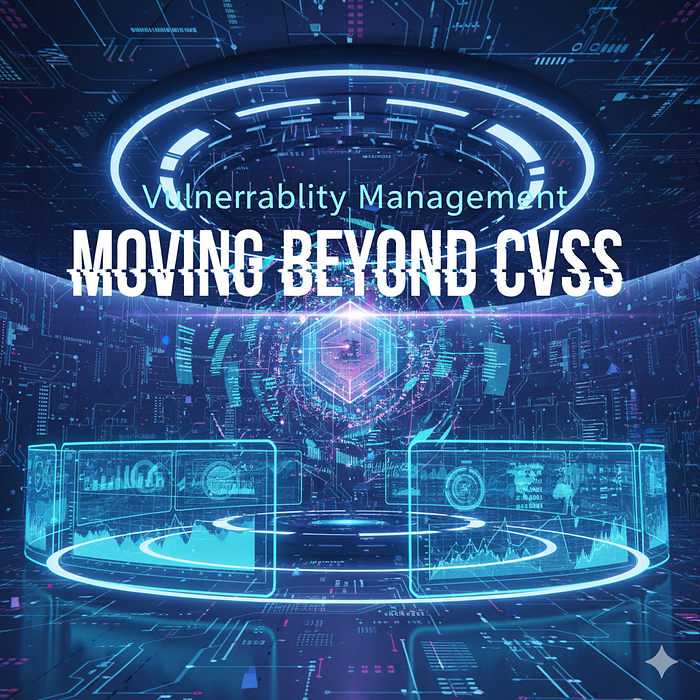Every security team knows CVSS. It's the standard baseline. Find a vulnerability. Check its CVSS score. Prioritize the ones with "critical" or "high." Patch. Move on.
But in 2025, relying only on CVSS is like navigating with an old map. The terrain has shifted. Attackers don't just exploit high CVSS scores, they weaponize chains of smaller vulnerabilities, threat activity, exploit availability, and business context. What we need is a smarter, chained approach to vulnerability management that goes beyond static scores.
What Is "Vulnerability Management Chaining"?
Vulnerability Management Chaining means integrating multiple dimensions of vulnerability risk into your prioritization and remediation process. Instead of asking:
"How bad is the vulnerability?" (CVSS),
you also ask:
- Is there exploit code available in the wild?
- Has the CVE been observed being exploited?
- What's the probability of exploitation (e.g. EPSS or similar)?
- What's the business or asset impact in our environment?
- Are there chained vulnerabilities (attack paths) that combine to give attackers more power?
In short: chain together exploit data + threat intelligence + environment/context + business impact to drive which vulnerabilities you fix first.
Not every critical CVSS deserves top priority. Some "medium" ones might kill you if part of an exploit chain. Not every assest deserves equal attention, and not every vulnerability based on Cvss deserves prioritization.
Why CVSS Alone Falls Short
Some of the main limitations:
- Static severity: CVSS describes traits of the vulnerability (like confidentiality, integrity, exploit complexity, etc.), but doesn't always reflect real world exploitability or current threat actor interest.
- Exploit code / threat context missing: A vulnerability that has proof-of-concept (PoC) exploit published, or is in threat actor feeds (e.g., CISA's Known Exploited Vulnerabilities, KEV), often is much more urgent.
- Attack chaining ignored: Attackers often don't use one vulnerability alone they chain several to elevate privileges, move laterally, etc. A low severity bug might be crucial if it enables the chain. But Cvss won't take this in consideration.
- Lack of business context: Where is the vulnerability located? On internet-facing servers or internal ones? What data lives on that asset? If the vulnerability is in a non-critical system, high CVSS might not map to high risk.
Recent Research: How Chaining Helps
Some evidence backing this up:
- The paper "Vulnerability Management Chaining: An Integrated Framework for Efficient Cybersecurity Risk Prioritization" (Shimizu & Hashimoto, 2025) shows that combining historical exploitation evidence (KEV) + predictive threat modelling (like EPSS) + CVSS technical severity gives much better prioritization. The authors tested ~28,000 vulnerabilities and found that using the chained framework you can reduce your urgent remediation workload by ~95% or more while still catching ~85%+ of actual exploited vulnerabilities. arXiv
- "A Relevance Model for Threat-Centric Ranking of Cybersecurity Vulnerabilities" (McCoy et al., 2024) shows aggregating threat-actor behavior, public exploit data, and severity yields huge improvements over using CVSS alone. arXiv
These show that chaining isn't just a theory in practice, it's highly effective.
Real-World Examples of Exploit Chains & Threat Data in Action
Here are some attack stories that show why chaining matters:
- Palo Alto Networks exploit chain: Attackers combined CVE-2025–0108 (authentication bypass) + CVE-2024–9474 (privilege escalation) + CVE-2025–0111 (file read issue) in a chain on PAN-OS firewalls. CVSS scores of individual CVEs were high, but the real danger was in how they chained together to give greater access and exposure. TechTarget
- Android spyware + Chrome sandbox bypass + privilege escalation: In mobile environments, spyware vendors have used chains combining browser vulnerabilities, sandbox escapes, and driver exploits. Even when individual CVEs had less flashy(low) CVSS scores, together they lead to serious compromise. CSO Online
How to Implement Vulnerability Management Chaining in Your Organization
Building an effective vulnerability management chaining framework requires a structured and contextual approach.
It begins with establishing a complete asset inventory : understanding what you own, where it lives, and how critical it is to your business operations. Once that foundation is set.
The next step is to integrate real-time threat and exploit intelligence into your vulnerability data. Sources like CISA's KEV catalog, EPSS scores, and public proof-of-concept repositories help you understand what's actually being targeted or weaponized in the wild. Threat Intelligence Platforms, TIPs, KEV lists, EPSS APIs. With enriched data in place, you move on to identifying possible attack chains, mapping how vulnerabilities could interact to allow lateral movement or privilege escalation across your network.
This forms the basis for the fourth step : creating a chained prioritization model that merges CVSS severity, exploitability insights, and business impact to generate a more realistic risk score.
The fifth step involves automating enrichment and feedback loops, so that as new exploit data or threat signals emerge, your prioritization dynamically adapts without manual intervention.
Finally, you must measure and refine the outcomes, tracking metrics like remediation time, coverage of exploited vulnerabilities, and improvements in overall risk posture.
Conclusion
CVSS has been useful, but it's no longer enough alone. Vulnerability Management Chaining is the way forward: combining CVSS with exploit data, threat intelligence, and chain/attack path reasoning gives you a sharper, more realistic view of what risks to fix first.
If your organization isn't already using chaining-style prioritization, it probably should be. Because in today's threat landscape, what matters most isn't always what looks worst on paper.

